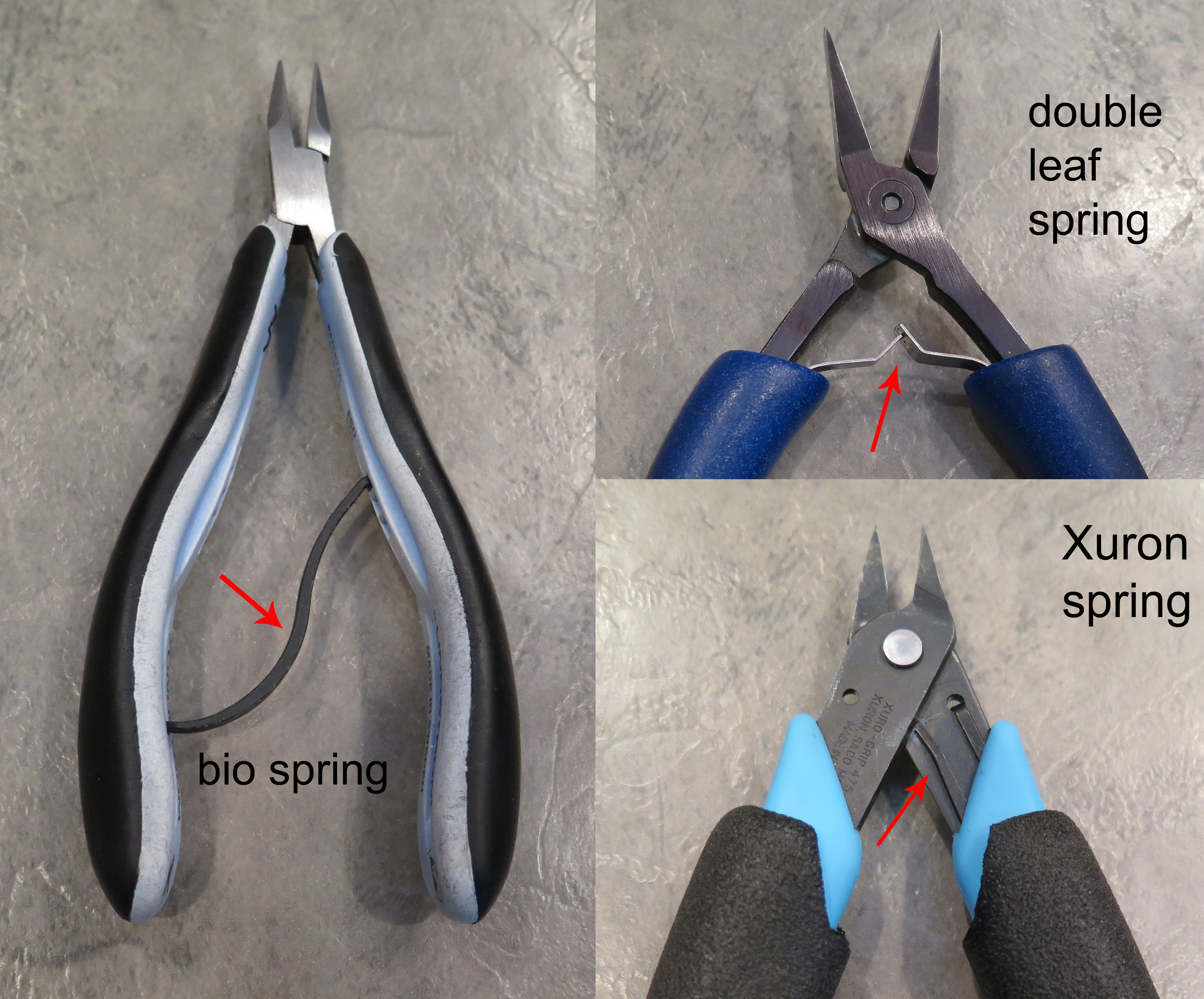What to Consider When Choosing Pliers (Part 3 of 4)
SPRINGS:
Some pliers have springs and some don’t. I prefer pliers with springs. Springs push the handles of the pliers open when you release the pressure on the handles, so you don’t have to do it manually. This helps alleviate hand fatigue, allowing you to work longer without discomfort.

My various pliers have 3 different types of springs: the double leaf spring, the bio spring, and the Xuron spring. They all have different amounts of tension, but not so different that it noticeably affects my work. I’ll discuss the differences between the three.
Double-Leaf springs are the most common. They work well, however, when this type of spring breaks, it is not something that most of us can easily fix by ourselves. One clever solution I’ve seen on-line is to glue rare earth magnets to the inside of the handles to repel them apart. Quality plier brands will usually have some sort of repair option. I’ve had the springs replaced on my Swanstrom pliers a couple of times. The repair was less than the cost of the pliers, but more than the cost of a new pair of Xurons. Also, the double leaf spring can occasionally get caught on certain styles of plier racks.
The bio spring is available on Lindstrom’s RX series pliers. It is adjustable, so you can choose the amount of tension that is comfortable for you. If it fails, you can easily purchase and install a replacement spring. The drawback to this spring is that it tethers the handles of the pliers to each other, limiting your ability to open the jaws wide, if needed, without removing the spring. I’ve had my pair for a long time. Lindstrom has since made some updates to the design. Many of my students who have purchased the newer pliers complain that the spring often pops off while they are working. I have not experienced this issue with my older pliers.
The Xuron spring is unique. It is a thin U-shaped piece of metal that is located under the handle cover. I haven’t had to replace any of my Xuron springs yet, but I haven’t had them for as long as I’ve had my Swanstrom, Lindstrom and Tronex pliers. If your spring fails, you can contact Xuron for a replacement spring that you can install by removing the plastic handle cover. I like that this spring is placed under one handle cover and is totally out of the way.
Previous Installments: Part 1 – Personal Considerations, Part 2 – Jaws
Next Installment: Part 4 – Handles
Comments are closed.


Hazel McSweeney
July 31, 2017 at 12:43 amThis is really useful info. I didn’t know Xuron springs were replaceable. Thanks for a great series of posts Karen 🙂
Karen Karon
July 31, 2017 at 11:10 amThanks Hazel! Glad you are finding the information helpful.